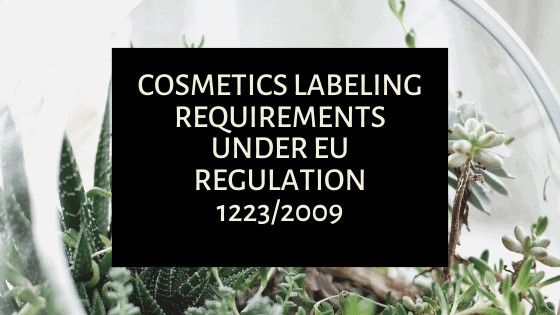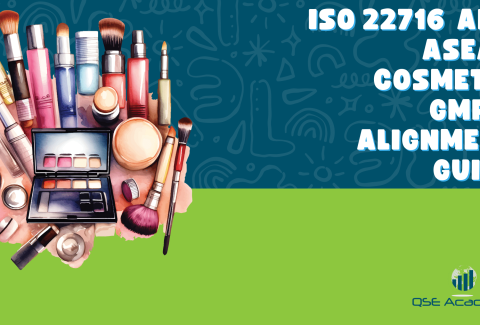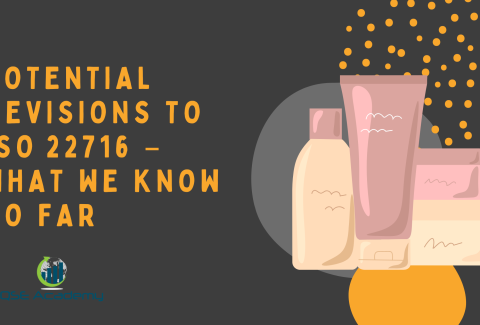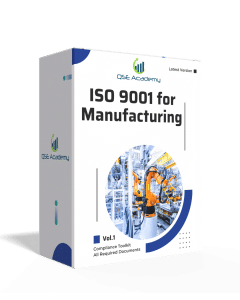Cosmetics Labeling Requirements Under EU Regulation 1223/2009
Last Updated on October 24, 2025 by Hafsa J.
Cosmetics Labeling Requirements Under EU Regulation 1223/2009
If you’ve ever wondered about the rules that govern cosmetics in the European Union, EU Regulation 1223/2009 is the key player. This regulation is the law that sets the standards for all cosmetics products sold within the EU. Whether it’s that favorite face cream, a new lipstick, or even your shampoo, all these products need to comply with the guidelines set out in EU Regulation 1223/2009 before they can be sold on the market.
The main goal of this regulation? Simple: consumer safety. It ensures that all cosmetics sold in the EU are safe to use and that consumers know exactly what they’re putting on their skin. But it’s not just about safety; EU Regulation 1223/2009 also promotes transparency and environmental responsibility. For manufacturers, it means there are clear rules to follow, covering everything from product testing to labeling and claims.
So, why should you care about EU Regulation 1223/2009? Well, if you’re a cosmetic brand or thinking about launching your own products, this regulation affects you. Without following the standards laid out by this law, your products may not make it to the EU market at all.
Now, let’s dive a little deeper into what this regulation really covers and how it works. The first thing to know is that it applies to all cosmetic products sold in the EU, whether they are made in Europe or imported from elsewhere. This means that companies outside the EU must also meet these requirements if they want to sell their products in European countries.
At its core, EU Regulation 1223/2009 is about making sure that consumers are protected from unsafe or harmful products. But it also lays down rules for ingredient transparency, product safety assessments, good manufacturing practices (GMP), and much more. If you’re planning on marketing cosmetics, understanding this regulation is absolutely crucial to making sure your products comply with EU law.
By following EU Regulation 1223/2009, you’re not just meeting legal requirements; you’re also showing your customers that you take their safety seriously. And that’s something they’ll definitely appreciate!
In the next section, we’ll go over the key requirements of this regulation in more detail, so you can get a clearer picture of what’s expected when bringing a cosmetic product to the EU market. Stay tuned!
Key Requirements of EU Regulation 1223/2009
When you’re thinking about launching a cosmetic product in the EU, the first thing you need to know is that EU Regulation 1223/2009 has some pretty clear and important requirements. These are not just guidelines – they’re legal standards that need to be followed to ensure your products are safe, properly labeled, and in line with the law. Let’s break them down and see what’s expected.
Product Safety Assessments
One of the most important requirements under EU Regulation 1223/2009 is that all cosmetic products need to go through a product safety assessment before they can hit the market. Think of this as a check-up for your product – just like how we all need a medical check-up before getting a health certificate. The safety assessment must evaluate whether the product is safe for consumers to use. It takes into account things like the ingredients, their concentration, and how the product will be used.
If you’re thinking about selling cosmetics in the EU, a Cosmetic Product Safety Report (CPSR) is needed. This report must include a toxicological profile of every ingredient and a detailed assessment of the product’s safety. This report is a big part of ensuring that your product isn’t going to harm anyone, and it has to be available for the Responsible Person (more on that in a second) to show authorities when requested.
The Responsible Person
Another key player in EU Regulation 1223/2009 is the Responsible Person (RP). This is the person or company that is legally accountable for ensuring that the product complies with all the regulation’s requirements. If you’re launching a cosmetic product, you need to appoint a Responsible Person who is based in the EU. This person handles everything from making sure safety assessments are done, to ensuring that proper labeling is in place, and keeping all the necessary documentation.
The RP is also responsible for communicating with competent authorities in case there are any issues with the product. So, if something goes wrong – like if a batch of products has to be recalled – the RP is the one to deal with the authorities. If you’re selling in the EU, this is a crucial step!
Good Manufacturing Practices (GMP)
One more important requirement under EU Regulation 1223/2009 is following Good Manufacturing Practices or GMP. Essentially, GMP ensures that products are consistently produced and controlled to quality standards. It’s like making sure the factory that produces your favorite snack follows strict hygiene and quality checks to make sure every bite is safe to eat. For cosmetics, GMP covers everything from the cleanliness of the production facility to how ingredients are stored and handled.
This requirement ensures that cosmetic products are consistently safe and meet the same high standards with each batch. Not following GMP could lead to dangerous products hitting the market, which is why this part of EU Regulation 1223/2009 is so crucial.
Labeling and Claims
Have you ever noticed how every cosmetic product has a list of ingredients and warnings on its label? Well, that’s all part of EU Regulation 1223/2009. The regulation outlines exactly what should and shouldn’t appear on cosmetic labels.
For example, ingredients must be listed using INCI (International Nomenclature of Cosmetic Ingredients) names, and certain allergens need to be highlighted clearly. If a product makes any claims – like “anti-aging” or “100% natural” – those claims need to be backed up with evidence.
This transparency allows consumers to know exactly what they’re putting on their skin and helps build trust. Misleading claims or missing ingredient information can lead to penalties, so always double-check your labels to stay compliant with EU Regulation 1223/2009.
Market Surveillance
Finally, EU Regulation 1223/2009 includes rules around market surveillance. This means that once your product is on the market, it’s still subject to checks and reviews by authorities. If something goes wrong – say a product causes an allergic reaction or an issue with a batch – the regulation requires manufacturers to take action quickly. They need to track the products, investigate complaints, and, if necessary, recall products. The Responsible Person plays a big role in handling these situations.
These are just a few of the key requirements of EU Regulation 1223/2009. As you can see, compliance isn’t just about putting a product out there; it’s about making sure that every aspect – from safety assessments and good manufacturing practices to clear labeling and post-market surveillance – is in place to protect consumers and the integrity of the industry. It’s a lot to keep track of, but it’s all designed to make sure that cosmetic products are safe and trustworthy for everyone.
In the next section, we’ll explore what kind of safety testing is required under this regulation, so you can better understand how to get your products market-ready!
Product Safety and Testing Under EU Regulation 1223/2009
Now that we’ve covered the big picture of EU Regulation 1223/2009, let’s dive deeper into one of the most important aspects: product safety and testing. You see, safety is at the heart of this regulation. It’s not just about creating cosmetics; it’s about making sure that the products you bring to market don’t harm anyone. Whether it’s skincare, makeup, or hair care, every cosmetic product has to be thoroughly tested before it’s allowed to hit the shelves in the EU.
Why is Safety Testing So Important?
The main goal of EU Regulation 1223/2009 is to protect consumers. Cosmetics are directly applied to our skin and hair, and sometimes even near sensitive areas like our eyes. That’s why it’s so important to make sure that these products are completely safe to use. The regulation requires that all cosmetic products undergo safety assessments to ensure they don’t cause any harm. This means that all the ingredients, the formulation, and even how the product is used have to be checked carefully.
But here’s the thing: EU Regulation 1223/2009 doesn’t just focus on testing the finished product. It goes even further by requiring that all the ingredients used in a product undergo toxicological assessments. These assessments look at whether any ingredients could cause an allergic reaction, irritation, or other harmful effects. So, if you’re a manufacturer, it’s not just about testing the final product – you also need to ensure that each individual ingredient is safe before it’s even used in the formulation.
What is the Cosmetic Product Safety Report (CPSR)?
A big part of the safety process under EU Regulation 1223/2009 is the Cosmetic Product Safety Report (CPSR). This report is a detailed document that must be prepared for every cosmetic product before it’s marketed in the EU. Think of it like a safety certificate that shows your product has been properly tested and meets all the regulatory standards.
The CPSR includes information about the product’s formulation, its ingredients, the manufacturing process, and the safety testing that’s been done. It also contains a toxicological profile of each ingredient used in the product, which is where things like irritation potential, toxicity, and allergens are carefully considered. So, if you’re bringing a new cosmetic product to market, the CPSR will be your best friend. It’s a way of proving that your product is safe for consumers, and without it, your product won’t make it into the EU market.
The Role of the Responsible Person in Safety Testing
As mentioned earlier, under EU Regulation 1223/2009, every cosmetic product has to have a Responsible Person (RP) who’s legally accountable for ensuring compliance with all the regulation’s requirements. When it comes to safety testing, the RP is the one who makes sure that the safety assessments are completed and that all the necessary documentation, including the CPSR, is in place.
The RP must ensure that the product’s safety is assessed thoroughly, including the toxicological risk assessment. They need to verify that the product meets all the safety standards set by the regulation and that no unsafe ingredients are being used. It’s a big responsibility, but it’s also crucial in making sure that the products are safe for consumers and fully compliant with EU Regulation 1223/2009.
Non-Animal Testing Under EU Regulation 1223/2009
Here’s something pretty cool – EU Regulation 1223/2009 is a strong advocate for non-animal testing. The regulation clearly states that cosmetics cannot be tested on animals within the EU, and it even applies to products being imported from outside the EU. This is part of the EU’s commitment to protecting animals and promoting ethical practices in the cosmetics industry.
Instead of animal testing, companies are encouraged to use alternative methods like in-vitro testing (lab-based testing) and computer modeling to predict the effects of ingredients. This is a huge step forward in creating a more ethical and humane cosmetics industry, while still ensuring the safety of products. If you’re making cosmetics for the EU market, it’s important to note that testing your products on animals is not only unnecessary, it’s also illegal.
In a nutshell, EU Regulation 1223/2009 takes product safety seriously, and it requires thorough testing before a cosmetic product can be sold in the EU. From safety assessments and toxicological reports to non-animal testing practices, the regulation ensures that products are safe for consumers while also encouraging ethical testing methods. Whether you’re a cosmetic manufacturer or a consumer, knowing that products undergo these rigorous safety standards helps build trust and confidence in the industry.
Next, we’ll explore the labeling requirements under EU Regulation 1223/2009, so you can make sure your product’s packaging is just as compliant as its ingredients and testing! Stay tuned!
EU Regulation 1223/2009 on Labeling and Ingredient Transparency
Alright, so you’ve got your cosmetic product ready to go. It’s safe, tested, and compliant with EU Regulation 1223/2009. But before it can hit the market, there’s one crucial step left: the labeling. Believe it or not, how you label your product is just as important as its ingredients and safety testing. If your product isn’t labeled correctly, it could face penalties, or worse, be pulled from the market.
So, let’s talk about what’s required under EU Regulation 1223/2009 when it comes to labeling and ingredient transparency. The goal here is to make sure that consumers know exactly what they’re buying and that all the important information is easy to find. After all, no one wants to put something on their skin without knowing what’s inside!
What Must Be Included on a Cosmetic Product Label?
Under EU Regulation 1223/2009, there are a few must-have elements that need to appear on your cosmetic product’s label. It’s not just about looking pretty – it’s about giving your customers all the essential information they need to make an informed choice.
Here’s a breakdown of what your label needs to include:
- The Name and Address of the Responsible Person (RP): This is important because if there’s ever an issue with the product, the Responsible Person is the one who can be contacted. This person must be based in the EU, and their details need to be clearly listed on the label.
- Product Function: Every cosmetic product should clearly state its function on the label – whether it’s a moisturizer, a shampoo, or a sunscreen. This helps consumers understand what the product is intended to do.
- Ingredients List (INCI Names): One of the most crucial parts of labeling is the ingredient list. Under EU Regulation 1223/2009, all ingredients must be listed in descending order of weight. And it’s not just about regular names – you need to use INCI (International Nomenclature of Cosmetic Ingredients) names for every ingredient, which helps ensure that the same ingredient is recognized globally, no matter the language or country.
- Warnings and Cautions: If your product contains any ingredients that might cause irritation or allergic reactions (like certain fragrances or preservatives), these need to be clearly highlighted on the label. Think of it like a heads-up so consumers know what to watch out for.
- Expiry Date or “Period After Opening” (PAO): Some cosmetics have a shelf life after they’re opened, and others might have a specific expiration date. EU Regulation 1223/2009 requires that this information is included on the label so consumers know how long they can safely use the product after opening.
- Batch Number or Lot Number: This is for traceability, in case there’s ever a need to recall a product. It’s a way of identifying when and where the product was made. This is especially useful in case there’s a safety issue with a specific batch.
Ingredient Transparency: Why It Matters
Transparency is at the heart of EU Regulation 1223/2009. Consumers have the right to know exactly what’s inside the products they use, especially when it comes to things like skincare or makeup. That’s why ingredient transparency is such a big deal in the regulation. It’s not just about listing ingredients; it’s about being upfront with customers and making sure they can easily understand what’s in their products.
For example, if you’re selling a product with fragrances, you need to list all the ingredients, but also highlight certain allergens that could cause reactions. If your product contains things like parabens, sulfates, or alcohol, those need to be listed as well. The idea here is that consumers should have all the facts they need to make a choice that works for their skin and health.
How to Ensure Your Labeling is Compliant?
If you want to be sure that your product’s labeling is up to par with EU Regulation 1223/2009, here’s what you need to do:
- Double-Check Your Ingredient List: Are you using INCI names for everything? Have you listed them in the right order? Are allergens and potential irritants highlighted?
- Include All the Legal Information: Make sure you’ve got the Responsible Person’s contact details, the function of the product, and any necessary warnings.
- Check the Expiry Date and Batch Number: This one is easy to overlook, but it’s super important for ensuring safety and traceability.
- Stay Updated on the Rules: Regulations change, and so do the standards for labeling. Make sure you stay on top of any updates to EU Regulation 1223/2009 to ensure your labeling is always compliant.
To sum it up, the labeling of your cosmetic product is about more than just looking good on the shelf – it’s about being transparent, clear, and informative with your customers. EU Regulation 1223/2009 has clear rules in place to help manufacturers like you stay compliant and protect consumers. By following these labeling requirements, you’re not just following the law, you’re building trust with your customers and showing that you take their safety seriously.
In the next section, we’ll explore the role of Good Manufacturing Practices (GMP) in making sure your products meet the highest standards of quality. Stick around!
The Role of Good Manufacturing Practices (GMP) in Compliance with EU Regulation 1223/2009
Alright, now that we’ve covered labeling, let’s talk about another super important part of EU Regulation 1223/2009 – Good Manufacturing Practices (GMP). You might have heard this term before, but what does it really mean in the context of cosmetics?
In simple terms, Good Manufacturing Practices are the standards you need to follow to ensure that your cosmetics are made safely, consistently, and to the highest quality. It’s about making sure that every single product, whether it’s a face cream or a hair serum, is produced with the same level of care and quality control every time.
Why Are GMP So Important?
Imagine you’re making a batch of face cream. You want to make sure that every jar you produce has the same texture, scent, and effectiveness as the first one. EU Regulation 1223/2009 makes this a priority by requiring that cosmetics are manufactured under Good Manufacturing Practices to ensure that every product is made under strict, controlled conditions.
This means that GMP isn’t just about quality – it’s also about safety. If manufacturing processes are not controlled and monitored properly, you could end up with products that are contaminated, inconsistent, or even harmful. That’s why following GMP is so crucial in keeping your products safe for consumers and in line with EU Regulation 1223/2009.
What Does GMP Include Under EU Regulation 1223/2009?
So, what exactly are the GMP requirements under EU Regulation 1223/2009? Here’s a breakdown:
- Quality Control: GMP ensures that every product that leaves the factory is checked for consistency and quality. This involves everything from testing raw materials before they’re used, to checking the finished product before it gets packaged and shipped.
- Cleanliness and Hygiene: It’s all about making sure that the production facility is clean, organized, and free of contamination. Whether it’s the equipment, the environment, or the employees, everything must be kept to the highest standards of cleanliness to prevent anything from compromising the product’s safety.
- Employee Training: Under EU Regulation 1223/2009, it’s not just about what happens in the production room – it’s also about ensuring that the people who are making the products are well-trained. Employees need to understand the importance of GMP and know how to follow the right procedures to ensure safety and quality at every step of the process.
- Proper Storage and Handling: Ingredients need to be stored correctly to maintain their safety and effectiveness. This means controlling temperature, humidity, and storage conditions to ensure that everything is kept at optimal levels. Improper storage could lead to contamination or product degradation.
- Traceability and Record Keeping: GMP also requires that manufacturers keep detailed records of their processes, including batch numbers, ingredient sources, and testing results. This is part of ensuring that if there’s ever a problem, it can be traced back to the source, making recalls and fixes easier.
How Does GMP Affect Your Production Process?
Let’s say you’re starting your own cosmetics line. If you want to sell in the EU, you’ll need to make sure your production process aligns with EU Regulation 1223/2009’s GMP requirements. That means setting up a system where every part of the production – from sourcing ingredients to final packaging – is closely monitored for quality and safety.
For example, if you’re making a new face serum, you’ll need to ensure that the factory where it’s produced meets GMP standards. The ingredients should be tested before they’re mixed, the equipment should be cleaned regularly, and each batch should be checked for consistency. Every time a product is made, you should be able to trace it back to the original ingredients and production conditions.
If your factory doesn’t follow these practices, your product could be compromised, leading to potential safety issues, product recalls, or even penalties for non-compliance with EU Regulation 1223/2009. On the other hand, if you’re following GMP, you can be confident that your product is safe and consistent – and that you’re meeting the regulation’s requirements.
What Happens If GMP is Not Followed?
If you skip out on GMP or don’t take it seriously, there can be some serious consequences. Products that don’t meet GMP standards might be unsafe, leading to potential harm to consumers. Imagine launching a new lipstick, only to find out later that the production process wasn’t controlled properly, and the product causes skin irritation. That’s a nightmare for both your brand and your customers.
Under EU Regulation 1223/2009, if your products fail to meet GMP standards, they could be recalled from the market, and you could face fines or legal consequences. Not only that, but your brand reputation would likely take a huge hit. On the flip side, when you follow GMP, you’re ensuring your customers get safe, high-quality products every time – and that’s something that builds trust and loyalty.
To wrap it up, Good Manufacturing Practices (GMP) are not just a box to check off; they’re a crucial part of creating cosmetics that are safe, effective, and compliant with EU Regulation 1223/2009. Whether it’s ensuring cleanliness, testing ingredients, or keeping detailed records, following GMP helps make sure your product is consistently safe and high-quality.
In the next section, we’ll dive into the post-market surveillance system under EU Regulation 1223/2009, where we’ll look at how the regulation continues to monitor products even after they hit the shelves. Stick around!
Post-Market Surveillance and Consumer Safety Under EU Regulation 1223/2009
So, let’s say your cosmetic product has made it to the shelves. It’s been tested, labeled, and made under the strictest standards of EU Regulation 1223/2009. Everything seems perfect, right? Well, here’s the thing – EU Regulation 1223/2009 doesn’t stop working once your product is out in the market. In fact, the regulation has a crucial part that kicks in after your product has been sold: post-market surveillance.
This part of the regulation ensures that products continue to be safe even after they’ve hit the shelves. It’s like a safety net that makes sure if something goes wrong, it gets spotted quickly and dealt with. So, let’s break it down and see why post-market surveillance is so important under EU Regulation 1223/2009.
Why is Post-Market Surveillance Necessary?
Imagine this: You’ve just released a new face cream that you’re really excited about. Everything from testing to labeling went perfectly. But what if a few months down the road, a small number of customers start complaining about skin irritation? Or maybe a batch of products gets accidentally contaminated during shipping. EU Regulation 1223/2009 doesn’t leave these issues to chance – it requires that post-market surveillance systems be in place to monitor the safety of products even after they’ve been sold.
This means that the safety of the product doesn’t just end at the point of sale. Post-market surveillance allows authorities and manufacturers to track any potential issues with products after they’re on the market and take necessary actions if needed.
How Does Post-Market Surveillance Work?
Under EU Regulation 1223/2009, manufacturers (and their Responsible Person) are required to ensure that there is a system in place to monitor and assess the safety of their products after they’re sold. But what does this really mean in practice?
- Consumer Feedback and Complaints: One of the main ways to spot potential issues with a product is by paying attention to consumer feedback. If customers report side effects or problems with a product, it’s the manufacturer’s responsibility to investigate. This could involve looking into whether the product contains any harmful ingredients or if there was an error in the manufacturing process.
- Adverse Event Reporting: Another key aspect of post-market surveillance is reporting adverse events. This is where any negative reactions to the product (like rashes, allergic reactions, or eye irritation) need to be reported to the relevant authorities. If any safety issues are identified, action can be taken quickly, such as a product recall.
- Market Checks: The competent authorities in the EU are also keeping an eye on products. They conduct inspections and checks on cosmetic products in the market to make sure they meet the standards of EU Regulation 1223/2009. If a product is found to be unsafe or not in compliance, they can issue a recall or ban it from the market.
What Happens When a Product is Found to be Non-Compliant?
If, through post-market surveillance, a product is found to be unsafe or not compliant with EU Regulation 1223/2009, several things can happen. The first step is often a product recall, which means pulling the product off the shelves and asking consumers to return it. This helps prevent further exposure to potentially harmful products and protect consumers.
In some cases, EU Regulation 1223/2009 also allows for other actions, such as banning the product or issuing fines to the manufacturer for not following safety standards. These measures are in place to protect consumers and maintain trust in the cosmetics industry.
The Role of the Responsible Person in Post-Market Surveillance
The Responsible Person (RP) is again the key player in ensuring that post-market surveillance is properly managed. This person or company is responsible for making sure that any adverse events or safety concerns are investigated and reported to the relevant authorities. If there are any issues with the product, the RP must take immediate action to either recall the product, modify the formulation, or address the problem in some other way.
The RP is also the one who will keep track of all the complaints, adverse events, and any other issues that arise from the market. They’ll need to make sure everything is documented properly and that all steps are taken to correct the situation if the product turns out to be problematic.
How Can Manufacturers Stay Compliant with Post-Market Surveillance?
If you’re a manufacturer, the key to staying compliant with EU Regulation 1223/2009‘s post-market surveillance requirements is to be proactive. Here’s what you can do:
- Set Up a Consumer Feedback System: Make it easy for consumers to contact you with feedback or complaints. Having a system in place to gather and track customer concerns will help you stay ahead of potential problems.
- Keep Detailed Records: Always keep records of consumer complaints, adverse events, and any actions taken in response. This helps ensure that you’re ready to act quickly if any issues arise.
- Work Closely with Authorities: Make sure you’re in touch with the relevant authorities and understand what needs to be reported. This way, if there’s a problem, you’ll be prepared to comply with the regulations and take quick action.
To sum it up, post-market surveillance is a crucial part of EU Regulation 1223/2009. It ensures that cosmetic products remain safe long after they’ve been sold, and that any issues can be addressed quickly. As a manufacturer, being proactive in gathering consumer feedback, keeping records, and working with authorities is the best way to stay compliant and ensure consumer safety. After all, the goal is to create products that not only meet regulatory standards but also continue to keep your customers safe and happy.
In the next section, we’ll dive into the consequences of non-compliance with EU Regulation 1223/2009, so you can see just how important it is to follow these rules! Stay tuned!
Penalties for Non-Compliance with EU Regulation 1223/2009
Now that we’ve covered everything from safety testing to labeling and post-market surveillance, you might be thinking, “Okay, so why is it so important to follow all these rules?” Well, here’s the thing: EU Regulation 1223/2009 isn’t just a set of guidelines – it’s the law. And like any law, there are serious consequences if you don’t comply. So, let’s talk about what can happen if your cosmetic product doesn’t meet the standards of EU Regulation 1223/2009.
What Happens If You Don’t Comply?
Imagine this: You’ve invested a lot of time and money into creating your cosmetic product. But if you skip over any of the requirements in EU Regulation 1223/2009, you could be facing some pretty serious penalties. These penalties can range from fines to product recalls, and in some cases, even a ban on selling the product in the EU. That’s a lot to lose, right?
Let’s break down the possible penalties for non-compliance:
- Product Recalls: One of the most common consequences of non-compliance is a product recall. If a product is found to be unsafe or not compliant with EU Regulation 1223/2009, it can be removed from the market. This is not just an inconvenience – it can be a major blow to your brand’s reputation. Not to mention, recalling a product means a lot of money, time, and resources spent on fixing the issue and addressing consumer concerns.
- Fines: If you’re found to be non-compliant with EU Regulation 1223/2009, you could be slapped with a fine. These fines can vary depending on the severity of the issue, but they can add up quickly. Fines are often imposed when the product is found to be unsafe, mislabeled, or lacking the necessary documentation (like the Cosmetic Product Safety Report (CPSR)).
- Product Bans: In some cases, if a product is particularly harmful or fails to meet the safety standards, it could be banned from being sold in the EU entirely. This is the worst-case scenario, and it can seriously damage your brand’s ability to do business in the EU market.
- Legal Actions and Lawsuits: If a consumer suffers harm from a cosmetic product, the manufacturer could be held legally responsible. This could lead to lawsuits, which can be time-consuming and expensive, not to mention the damage it could do to your company’s reputation. The regulation also allows for legal action against companies that repeatedly fail to comply with safety standards.
Why Does Non-Compliance Matter?
You might wonder, “Why does all of this matter so much? It’s just a few rules, right?” But here’s the thing: EU Regulation 1223/2009 exists for a very important reason – consumer safety. The regulation is in place to protect people from potentially harmful products and to ensure that everything on the market meets high safety and quality standards. If you don’t follow these rules, you’re not just risking penalties; you’re also risking your customers’ health and trust.
When products are non-compliant, whether due to poor safety testing, inaccurate labeling, or improper manufacturing processes, it can lead to allergic reactions, irritation, or even worse. If a product harms a consumer, the impact on your brand could be devastating. People remember when something goes wrong, and it can take years to rebuild trust with your audience.
How to Avoid Penalties and Stay Compliant
The best way to avoid penalties and ensure your product stays safe and legal is to stay on top of your compliance with EU Regulation 1223/2009. Here are a few tips to help you stay on the right track:
- Keep Detailed Records: Make sure you have all the required documentation, such as the Cosmetic Product Safety Report (CPSR), records of safety testing, and GMP compliance reports. Having everything documented and easily accessible is key to proving compliance.
- Regularly Review Your Labeling: Double-check your product labels to make sure they include everything required by the regulation, like the correct ingredient list, warnings, and the contact information for the Responsible Person.
- Monitor Post-Market Safety: Don’t let your guard down once your product is on the market. Keep an eye on consumer feedback, track any adverse events, and make sure your post-market surveillance system is up to date. The sooner you catch any issues, the better.
- Work with Experts: If you’re unsure about any part of EU Regulation 1223/2009, don’t hesitate to work with a compliance expert. Getting guidance from someone who knows the regulation inside and out can save you from costly mistakes.
Real-Life Examples of Non-Compliance Consequences
To really drive home the importance of compliance, let’s take a quick look at a few examples of companies that faced penalties for not following EU Regulation 1223/2009:
- Case 1: Misleading Claims: A skincare brand was fined after marketing a product with claims that were not supported by evidence. The product claimed to treat serious skin conditions, but there was no scientific proof to back up the claim. This led to a product recall, a hefty fine, and the company had to rework their entire marketing strategy.
- Case 2: Unsafe Ingredients: A cosmetics company was found to be using an ingredient that was banned under EU Regulation 1223/2009. The product was recalled, and the company faced a fine and market ban until they could prove that they had fixed the issue.
- Case 3: Lack of CPSR: A brand launched a new foundation without completing the required safety assessment. The authorities quickly flagged the product for lacking a Cosmetic Product Safety Report (CPSR), and the company faced both fines and a forced product withdrawal from the market.
To wrap things up, the penalties for non-compliance with EU Regulation 1223/2009 can be severe, ranging from fines to product recalls, and even product bans. But more than that, non-compliance can harm your brand’s reputation and put your customers at risk. Staying compliant isn’t just about avoiding penalties – it’s about ensuring that your products are safe, effective, and trustworthy. By following the regulation and keeping track of all the necessary steps, you can build a cosmetic brand that not only meets legal standards but also earns consumer trust for years to come.
Next, we’ll finish up by summarizing how to stay compliant with EU Regulation 1223/2009 and wrap up the article! Stay tunedv
Cosmetics Labeling Requirements EU Regulation 1223/2009: A Quick Recap
We’ve covered a lot of ground when it comes to EU Regulation 1223/2009, from the importance of safety testing to labeling requirements, GMP, post-market surveillance, and the consequences of non-compliance. Now, let’s take a moment to recap how you can stay compliant with this regulation and ensure that your cosmetic products are safe, effective, and legally sound in the EU market.
1. Make Safety Your Priority
The first and most important step to staying compliant with EU Regulation 1223/2009 is ensuring that your product is safe for consumers. Before your product hits the market, it must undergo a thorough safety assessment, including a Cosmetic Product Safety Report (CPSR). This report includes all the necessary testing data for your ingredients and formulations, proving that your product is free from harm.
Remember, safety testing is not just about checking the finished product. You need to test each ingredient used in the product as well. Whether it’s through toxicological risk assessments or non-animal testing methods, make sure your product is proven safe.
2. Follow the Good Manufacturing Practices (GMP)
To keep your product consistently safe and high-quality, you need to follow Good Manufacturing Practices (GMP). This includes maintaining a clean production environment, ensuring all ingredients are stored properly, training your staff on safety procedures, and keeping thorough records of each batch. It’s all about consistency and quality control.
By adhering to GMP, you’re ensuring that your product is made the same way every time and that every batch is free from contamination. This is essential for staying compliant with EU Regulation 1223/2009 and for keeping your customers safe.
3. Be Transparent with Your Labeling
When it comes to labeling, EU Regulation 1223/2009 leaves little room for error. Your product labels need to include all the essential information, such as the product’s name, function, ingredient list (using INCI names), any relevant warnings, and the Responsible Person’s contact information.
Transparency is key. If your product has allergens, preservatives, or any potentially irritating ingredients, these need to be clearly highlighted. Consumers need to know exactly what they’re putting on their skin, and by following the labeling rules, you build trust with your audience.
4. Monitor Post-Market Safety
The job doesn’t end once your product is on the shelf. Under EU Regulation 1223/2009, you’re required to monitor your product’s safety after it’s been released to the market. This is where post-market surveillance comes in. You need to keep track of customer feedback, handle any adverse events that arise, and report them to the relevant authorities.
Having a system in place to collect feedback, address complaints, and quickly react to any safety concerns will keep you compliant and help prevent bigger issues down the line.
5. Stay Up-to-Date with Regulatory Changes
Laws and regulations are always evolving. While EU Regulation 1223/2009 provides a solid foundation for cosmetic product safety in the EU, it’s important to stay informed about any updates or changes to the regulation. This will ensure you’re always in compliance with the latest requirements and help you avoid potential penalties.
6. Be Prepared for Inspections and Audits
At any time, authorities can conduct inspections to ensure that your product meets all the necessary regulations. Being prepared for these inspections is a key part of staying compliant. Make sure all your records are in order, your product labeling is up-to-date, and that you have all the necessary safety and GMP documents on hand.
If you’ve followed all the necessary steps to comply with EU Regulation 1223/2009, you’ll be ready for any inspections or audits that come your way.
In summary, staying compliant with EU Regulation 1223/2009 is all about ensuring safety, quality, and transparency at every stage of your product’s life. From rigorous testing and labeling to following Good Manufacturing Practices and monitoring post-market safety, each step is vital in creating a cosmetic product that is not only safe but also trustworthy in the eyes of your consumers.
By staying proactive, keeping records, and following these guidelines, you can confidently navigate the regulatory landscape of the EU market. And remember, compliance isn’t just about avoiding penalties – it’s about protecting your customers and building a brand they can trust.
So, whether you’re just starting your cosmetics business or looking to ensure your current products are fully compliant, EU Regulation 1223/2009 provides the framework you need to succeed in the EU market. Stay informed, stay safe, and your customers will thank you for it!
Conclusion: How to Stay Compliant with EU Regulation 1223/2009
We’ve covered a lot of ground when it comes to EU Regulation 1223/2009, from the importance of safety testing to labeling requirements, GMP, post-market surveillance, and the consequences of non-compliance. Now, let’s take a moment to recap how you can stay compliant with this regulation and ensure that your cosmetic products are safe, effective, and legally sound in the EU market.
1. Make Safety Your Priority
The first and most important step to staying compliant with EU Regulation 1223/2009 is ensuring that your product is safe for consumers. Before your product hits the market, it must undergo a thorough safety assessment, including a Cosmetic Product Safety Report (CPSR). This report includes all the necessary testing data for your ingredients and formulations, proving that your product is free from harm.
Remember, safety testing is not just about checking the finished product. You need to test each ingredient used in the product as well. Whether it’s through toxicological risk assessments or non-animal testing methods, make sure your product is proven safe.
2. Follow the Good Manufacturing Practices (GMP)
To keep your product consistently safe and high-quality, you need to follow Good Manufacturing Practices (GMP). This includes maintaining a clean production environment, ensuring all ingredients are stored properly, training your staff on safety procedures, and keeping thorough records of each batch. It’s all about consistency and quality control.
By adhering to GMP, you’re ensuring that your product is made the same way every time and that every batch is free from contamination. This is essential for staying compliant with EU Regulation 1223/2009 and for keeping your customers safe.
3. Be Transparent with Your Labeling
When it comes to labeling, EU Regulation 1223/2009 leaves little room for error. Your product labels need to include all the essential information, such as the product’s name, function, ingredient list (using INCI names), any relevant warnings, and the Responsible Person’s contact information.
Transparency is key. If your product has allergens, preservatives, or any potentially irritating ingredients, these need to be clearly highlighted. Consumers need to know exactly what they’re putting on their skin, and by following the labeling rules, you build trust with your audience.
4. Monitor Post-Market Safety
The job doesn’t end once your product is on the shelf. Under EU Regulation 1223/2009, you’re required to monitor your product’s safety after it’s been released to the market. This is where post-market surveillance comes in. You need to keep track of customer feedback, handle any adverse events that arise, and report them to the relevant authorities.
Having a system in place to collect feedback, address complaints, and quickly react to any safety concerns will keep you compliant and help prevent bigger issues down the line.
5. Stay Up-to-Date with Regulatory Changes
Laws and regulations are always evolving. While EU Regulation 1223/2009 provides a solid foundation for cosmetic product safety in the EU, it’s important to stay informed about any updates or changes to the regulation. This will ensure you’re always in compliance with the latest requirements and help you avoid potential penalties.
6. Be Prepared for Inspections and Audits
At any time, authorities can conduct inspections to ensure that your product meets all the necessary regulations. Being prepared for these inspections is a key part of staying compliant. Make sure all your records are in order, your product labeling is up-to-date, and that you have all the necessary safety and GMP documents on hand.
If you’ve followed all the necessary steps to comply with EU Regulation 1223/2009, you’ll be ready for any inspections or audits that come your way.
In summary, staying compliant with EU Regulation 1223/2009 is all about ensuring safety, quality, and transparency at every stage of your product’s life. From rigorous testing and labeling to following Good Manufacturing Practices and monitoring post-market safety, each step is vital in creating a cosmetic product that is not only safe but also trustworthy in the eyes of your consumers.
By staying proactive, keeping records, and following these guidelines, you can confidently navigate the regulatory landscape of the EU market. And remember, compliance isn’t just about avoiding penalties – it’s about protecting your customers and building a brand they can trust.
So, whether you’re just starting your cosmetics business or looking to ensure your current products are fully compliant, EU Regulation 1223/2009 provides the framework you need to succeed in the EU market. Stay informed, stay safe, and your customers will thank you for it!
Whether it’s ISO 9001, ISO 22000, or the cosmetics-focused ISO 22716, I’ve spent my career I’m not here to call myself an expert—I prefer “enthusiast” because I truly love what I do. When I’m not writing about standards, you’ll probably find me playing Piano 🎹, connecting with people, or diving into my next big project💫. I’m an engineer specialized in the food and agricultural industry
make ISO standards less intimidating and more approachable for everyone.
turning complex jargon into clear, actionable steps that businesses can actually use.
There’s something incredibly rewarding about helping people navigate food safety and quality management systems
in a way that feels simple, practical, and even enjoyable.
I have a Master’s in QHSE management and over 12 years of experience as a Quality Manager
I’ve helped more than 15 companies implement ISO 9001, ISO 22000, ISO 22716, GMP, and other standards
My clients include food producers, cosmetics manufacturers, laboratories, and service companies
I believe quality systems should be simple, useful, and efficient.
Looking for More Resources on ISO 22716?
If you found this article helpful, explore our premium resources designed to help you achieve ISO 22716 certification efficiently:
- Complete Documentation Package for ISO/IEC 22716 2017: Get all the essential templates and documents you need for fast, easy implementation.
- Online Course on ISO/IEC 22716 2017 : Enroll in our comprehensive training to master the key concepts and practical steps toward certification.
- ISO/IEC 22716 2017 Checklist: Download our detailed checklist to ensure you’ve covered every step of the process.
These resources are tailored to meet your needs and ensure a smooth certification journey. Explore them today and get one step closer to success!












Comment (1)
Olieis coelho cardozo
boa noite si pocivel poderia me manda uma informação como funciona um liberação da Anvisa de produtos de cosméticos aqui na Europa.
att.cardozo